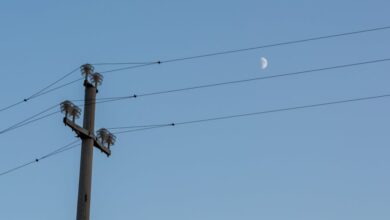Stop Memorizing—Start Forecasting: How Superforecasters Outthink Experts

Stop Memorizing—Start Forecasting: How Superforecasters Outthink Experts
Estimated reading time: 11 minutes
- Most “experts” (Hedgehogs) are poor at predicting the future, often performing only slightly better than chance.
- Ordinary people (Foxes) using specific cognitive techniques—Superforecasters—routinely outpredict traditional experts.
- Traditional education emphasizes memory over foresight, hindering predictive abilities crucial for success in dynamic environments like the Creator Economy.
- Key Superforecasting techniques include Fermi Estimation, Reference Class Forecasting, rigorous Probability Calibration, and continuous Update Loops.
- Cultivating a “Fox” mindset and employing these tools provides a significant competitive advantage, allowing creators to anticipate trends and innovate proactively.
- The Memory Prison That’s Destroying Your Future
- Hedgehogs vs. Foxes: Why Experts Fail and Ordinary People Excel
- Your Superforecasting Toolkit for the Creator Economy
- Why This Makes You Rich in the Creator Economy
- Your Foresight Challenge: 3 Actionable Steps to Become a Superforecaster
- The Uncomfortable Truth About Expertise
- FAQ
In a world drowning in data, everyone claims to have the answers. From market analysts to political pundits, we’re constantly bombarded by confident predictions about the future. But what if most of these “experts” are actually just guessing?
It’s time to challenge a fundamental assumption about expertise and learn how ordinary people are routinely outsmarting the so-called thought leaders of our time.
Here’s a statistic that will shatter your faith in “expertise”:
In a landmark 20-year study, Wharton professor Philip Tetlock proved that the average expert was only slightly better at predicting the future than a layperson using random guesswork.
Read that again.
The “smart” people you’ve been programmed to worship—economists with PhDs, political pundits on TV, industry analysts with decades of experience—are basically sophisticated coin-flippers with expensive degrees.
Meanwhile, a secret group of ordinary people—filmmakers, retirees, ballroom dancers—were making predictions with superhuman accuracy that left these “experts” looking like amateurs.
What separated the superforecasters from the PhD failures?
The experts were hedgehogs. The superforecasters were foxes.
And understanding this difference will determine whether you get rich or stay broke in the Creator Economy.
The Memory Prison That’s Destroying Your Future
Think back to your schooling. What was the primary skill rewarded? Memory. Recalling facts, dates, formulas, and theories was the fast track to good grades. This system, while seemingly logical, has inadvertently programmed us to prioritize past information over future possibilities.
School rewards you for what you can remember. The market rewards you for what you can predict.
But your entire education programmed you to be a human hard drive. You were trained to:
- Memorize information instead of synthesizing patterns
- Recall past facts instead of forecasting future trends
- Regurgitate what already happened instead of engineering what’s coming next
- Optimize for test scores instead of real-world outcomes
This is why straight-A students often fail as entrepreneurs. They’ve spent 16+ years strengthening their memory muscles while completely neglecting their foresight muscles. They’re intellectual athletes trained for the wrong sport.
While you were memorizing dead information, the future was racing ahead without you. This fundamental disconnect between academic success and real-world impact is costing countless creators and innovators their potential.
Hedgehogs vs. Foxes: Why Experts Fail and Ordinary People Excel
Philip Tetlock’s groundbreaking research didn’t just expose the flaws in expert predictions; it identified two distinct cognitive styles that explain the disparity.
The Hedgehog Trap (Why Smart People Make Dumb Predictions)
Tetlock discovered that most experts are Hedgehogs—they know “one big thing” and force everything into that framework. They possess a grand, unifying theory through which they interpret all information, often leading to strong, unshakeable convictions.
Hedgehog Characteristics:
- Confident in their predictions (often 80-90% certain)
- Believe in one overarching theory that explains everything
- Double down when proven wrong instead of updating their beliefs
- More famous and charismatic than accurate forecasters
- Get invited on TV precisely because they make bold, simple predictions
Examples of Hedgehog Thinking in the Creator Economy:
- “The internet is just a fad” (because physical retail has always dominated)
- “Bitcoin will go to zero” (because traditional monetary theory says so)
- “Remote work will never scale” (because office culture has always been the norm)
- “AI won’t replace creators” (because human creativity has always been unique)
Hedgehogs are confident, charismatic, and dead wrong most of the time. They’re intellectual fundamentalists who worship their own frameworks instead of worshipping accuracy. Their steadfastness makes them compelling, but their rigid worldview blinds them to nuance and new evidence, leading to disastrous predictions.
The Fox Advantage (Why Ordinary People Outpredict Genius Experts)
In stark contrast, Foxes know many small things instead of one big thing. They don’t adhere to grand theories about how the world works. Instead, they are eclectic, adaptable, and constantly revising their understanding based on new data.
Fox Characteristics:
- Think probabilistically: “30% chance this happens” instead of “this will definitely happen”
- Update constantly: Change their minds when new evidence emerges
- Embrace uncertainty: Comfortable saying “I don’t know” when they don’t know
- Synthesize multiple perspectives: Pull insights from diverse, seemingly unrelated fields
- Focus on accuracy over confidence: Would rather be right than sound impressive
The result? Foxes had real foresight. Hedgehogs didn’t. But here’s the kicker: The foxes weren’t geniuses. They were ordinary people who had developed extraordinary thinking habits.
This “Fox” mindset is precisely what you need to thrive in the volatile, rapidly evolving Creator Economy. It’s not about being the smartest; it’s about being the most adaptable and open-minded.
Your Superforecasting Toolkit for the Creator Economy
Tetlock discovered that the most accurate predictors—the superforecasters—used specific cognitive techniques that anyone can learn and apply to their creative ventures. These aren’t secret formulas but rather disciplined approaches to thinking about the future.
-
The Fermi Estimation Method
Instead of guessing randomly, superforecasters break complex questions into smaller, estimable parts. This method, named after physicist Enrico Fermi, helps reduce uncertainty by tackling manageable sub-problems.Hedgehog Approach: “Will Creator X reach 1 million subscribers this year?” → “Definitely yes, they’re killing it!”
Fox Approach:
- How many subscribers do they currently have?
- What’s their monthly growth rate over the last 6 months?
- How does this compare to similar creators in their niche?
- What external factors (e.g., platform changes, viral content, competitors) might accelerate or slow growth?
- What’s the base rate for creators in this genre reaching 1M subscribers historically?
The Fox gets scary accurate by breaking down the problem. The Hedgehog gets confidently wrong with a gut feeling.
-
Reference Class Forecasting
Don’t predict this specific situation—predict the category it belongs to. This technique grounds your predictions in historical data, moving away from unique speculation.Instead of: “Will my course succeed?” (impossible to predict accurately)
Ask: “What’s the success rate for courses in my niche, with my audience size, at my price point?” (much more predictable)
Instead of: “Will this startup pivot work?” (pure speculation)
Ask: “What percentage of B2B SaaS pivots succeed after missing initial product-market fit?” (data-driven prediction)
-
The Anti-Overconfidence Protocol
Most people are overconfident when they’re 70% sure and call it “definitely.” Superforecasters know the difference between nuanced probabilities and calibrate their confidence to match reality.They know:
- 60% confident (slightly more likely than not)
- 80% confident (very likely, but far from certain)
- 95% confident (almost certain, but shit still happens)
When superforecasters say “90% confident,” they’re right 90% of the time. When experts say “definitely,” they’re often right about 70% of the time. This calibration is a key to true predictive power.
-
The Update Loop System
Hedgehogs make a prediction and defend it to the death, often ignoring contradictory evidence. Foxes, however, embrace an iterative process: make a prediction, gather new evidence, and update their probability estimates continuously.Example applied to a Creator’s content strategy:
- Initial prediction: “40% chance short-form video will dominate my niche in 6 months.”
- After 3 months of platform data showing rising engagement: “Update to 65% chance.”
- After competitor analysis showing strong growth in their short-form content: “Update to 80% chance.”
- After seeing new long-form features introduced by platforms: “Update to 60% chance, considering a hybrid approach.”
This isn’t flip-flopping. It’s intelligence. It’s how you stay agile and relevant in a fast-changing digital landscape.
Why This Makes You Rich in the Creator Economy
While everyone else is memorizing yesterday’s best practices, you’ll be predicting tomorrow’s opportunities. This foresight gives you an undeniable competitive advantage.
Memory-Based Creators:
- Follow last year’s trends, always playing catch-up.
- Copy what worked for others in the past, leading to saturated markets.
- Make decisions based on outdated information, missing emerging opportunities.
- React to changes instead of anticipating them, always behind the curve.
Foresight-Based Creators:
- Spot trends before they become obvious, becoming early adopters.
- Position themselves ahead of market shifts, capitalizing on new demand.
- Make bets based on probabilistic thinking, reducing risk and increasing reward.
- Create the future instead of reacting to it, shaping their niche.
The creator who can predict what their audience will want next month beats the creator who only knows what worked last month. This proactive approach allows you to build a loyal audience, innovate effectively, and secure your long-term relevance.
Your Foresight Challenge: 3 Actionable Steps to Become a Superforecaster
It’s time to stop just consuming and start actively engaging with the future. Here are three steps you can take today to cultivate your superforecasting abilities:
-
Calibrate Your Probabilities: For the next 30 days, make 10 predictions per week about your creator journey with specific probability estimates. For example: “70% chance this YouTube video gets 10K+ views,” “40% chance this email gets 25%+ open rate,” or “85% chance this client says yes to the proposal.” Track your accuracy for each confidence level. The goal is to adjust your internal calibration until your “80% confident” predictions are right approximately 80% of the time. This builds metacognitive awareness of your own predictive biases.
-
Build Your Reference Class Database: Start collecting base rates relevant to your work. This could include success rates for different types of content in your niche, typical conversion rates for various marketing channels, average response rates for different outreach approaches, or failure rates for new product launches by similar creators. Use this data to ground your predictions in reality rather than wishful thinking. Over time, this database becomes an invaluable tool for objective decision-making.
-
Adopt Multiple Models & Challenge Assumptions: For every major decision or strong opinion you hold, actively seek at least 3 different frameworks or perspectives. If you’re launching a new product, consider economic models (supply/demand), psychological models (behavioral triggers), and systems models (network effects). For every belief, actively research the best counter-arguments. What evidence would change your mind? Who disagrees with you and why? This isn’t about becoming wishy-washy; it’s about becoming antifragile to being wrong, ensuring your decisions are robust and well-vetted.
The Uncomfortable Truth About Expertise
The more famous an expert, the worse their predictions. Fame rewards confidence and simplicity, not accuracy and nuance. The most accurate forecasters are usually unknown because they’re too busy being right to worry about being famous.
This is your unfair advantage. While your competition listens to charismatic hedgehogs making bold predictions, you’ll be building your superforecasting skills in obscurity. By the time they realize prediction accuracy beats prediction confidence, you’ll already own the future they’re still trying to remember.
For the next 24 hours:
- Make 5 specific predictions about your creator journey with probability estimates.
- Identify one major decision you’re facing and apply reference class forecasting.
- Find your strongest business belief and research the best counter-arguments.
- Track one prediction daily for the next month to calibrate your confidence.
Tip: Remember: The future belongs to those who can see it coming.
Cheers,
Praise J.J.
P.S. If this essay made you realize how much you’ve been living in the past instead of engineering the future, you’re starting to wake up. The superforecasters aren’t smarter than you—they just think differently than you. And thinking can be learned.
If you’d like to learn and apply more of these insights, you can get them early and access the archive by subscribing to my newsletter: https://crive.substack.com
Or you can hit the subscribe button here on Hackernoon.
FAQ
A: Hedgehogs are experts who know “one big thing” and fit all information into a single grand theory, leading to confident but often inaccurate predictions. Foxes, in contrast, know many small things, are adaptable, think probabilistically, and constantly update their beliefs based on new evidence, resulting in higher predictive accuracy.
A: Traditional education primarily rewards memory—recalling past facts, formulas, and theories. This system inadvertently programs individuals to prioritize past information over future possibilities, neglecting the development of “foresight muscles” essential for predicting trends and real-world outcomes.
A: Key techniques include the Fermi Estimation Method (breaking complex questions into smaller, estimable parts), Reference Class Forecasting (grounding predictions in historical data for similar situations), the Anti-Overconfidence Protocol (calibrating confidence levels to match reality), and the Update Loop System (continuously revising predictions with new evidence).
A: In the rapidly evolving Creator Economy, foresight provides a crucial competitive advantage. Foresight-based creators can spot trends early, position themselves ahead of market shifts, make calculated bets, and proactively shape their niche rather than react to outdated information, leading to loyal audiences and sustained relevance.
A: Yes. Philip Tetlock’s research showed that superforecasters were often ordinary people (e.g., filmmakers, retirees) who developed extraordinary thinking habits, not necessarily geniuses. The cognitive techniques and disciplined approaches can be learned and applied by anyone willing to cultivate these skills.





